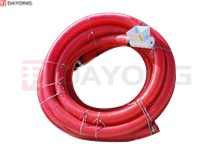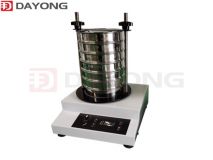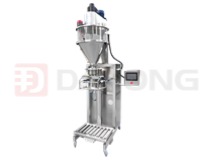Interpretation of the six categories of screening process
Interpretation of the six categories of screening process
Screening is the use of sieve to divide the grain size of the material into a number of grades according to the granularity.Grading is divided into different grades based on the difference of the settling velocity in the medium (water or air).
Screening is generally used for materials larger than 0.25 mm , and grading is generally used for materials smaller than o.2 mm. But in recent years, at home and abroad is the application of fine sieves grading of grading products, this classification efficiency is generally higher.According to the purpose of screening, screening operations can be divided into six categories.

(1) Independent screening. The aim is to screen out the final product that meets the user's requirements. For example, in the black metallurgical industry, often deviding iron-rich iron ore into different grain size, qualified large pieces of iron ore into the blast furnace smelting, powder ore into the furnace by the ore or sintering block.
(2) Auxiliary screening. This screening is mainly used in the crushting operations of the concentrator,which is helpful to the factory operation. Generally there are pre-screening and screening of checking.
Pre-sieving refers to screening of the ore into the crusher . Picking out qualified ore, so you can reduce the amount of ore into the crusher to improve the handling capacity.
Inspection Screening refers to the sieving of the ore after it has been broken, with the aim of returning the unqualified crushed product to the crushing operation. So check the screening can improve the utilization of crushing equipment, similar to the classification machine and grinding machine into a closed loop work to improve the grinding efficiency.
(3)Preparation screening. The purpose is to prepare for under the process. During this process, the coarse, medium and small different products are phased out.
(4)Selective screening.If the material is very different in the composition of the particle size, you can get through the quality of different particle size, by removing the low quality of the grain size, to improve the quality of the material.
(5)Dehydration screening. Remove moisture from the material.
(6)Desliming sieve. Screening fine particles in the material.





 (Live chat)
(Live chat)

_213x160.jpg)



 +86-373-3669005
+86-373-3669005 laura@vibratingscreen.cc
laura@vibratingscreen.cc +86-373-3669006
+86-373-3669006 From West Room 5, 1st Floor, Building 18, Huilong Yangguang Mingyuan, New District, Xinxiang, Henan, China (Mainland).
From West Room 5, 1st Floor, Building 18, Huilong Yangguang Mingyuan, New District, Xinxiang, Henan, China (Mainland). Your Position:
Your Position:




